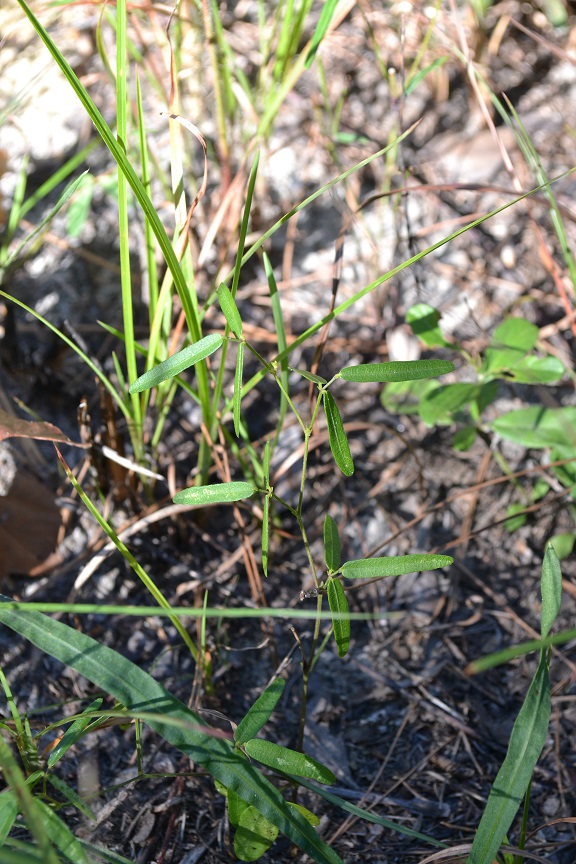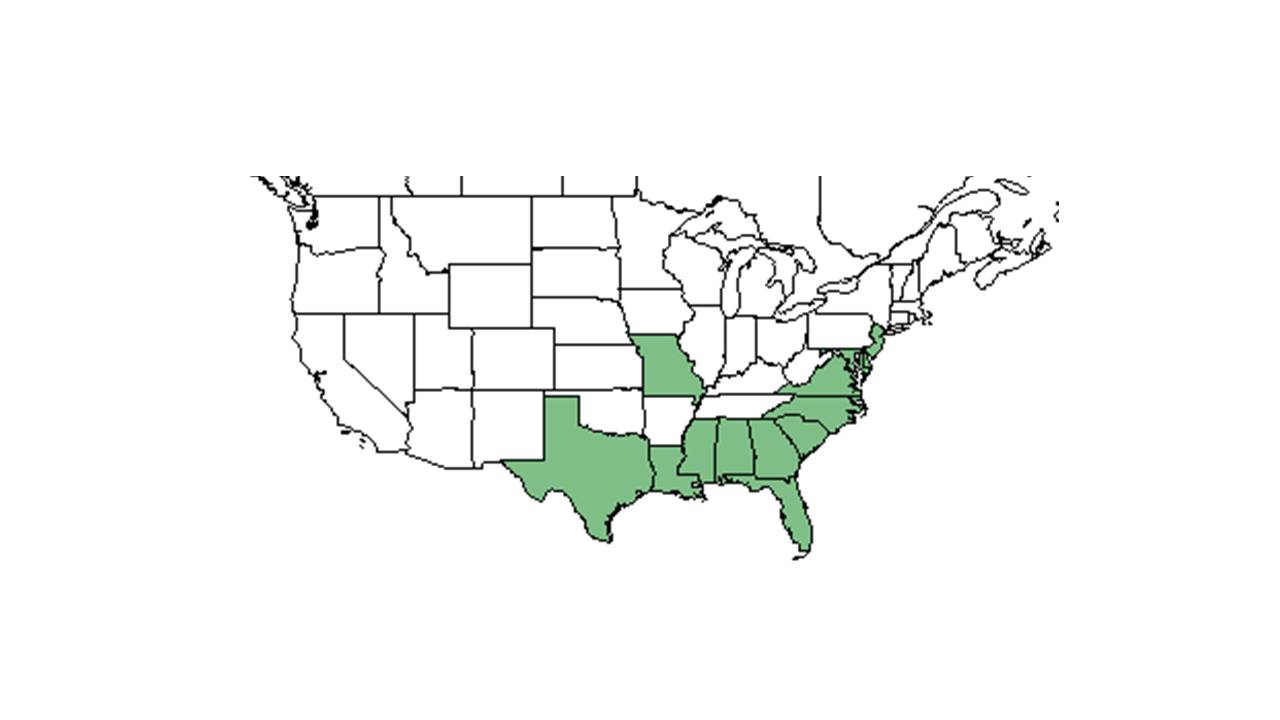Difference between revisions of "Desmodium strictum"
(→Conservation and Management) |
|||
| Line 45: | Line 45: | ||
<!--===Diseases and parasites===--> | <!--===Diseases and parasites===--> | ||
| − | ==Conservation and | + | ==Conservation and management== |
| + | |||
==Cultivation and restoration== | ==Cultivation and restoration== | ||
==Photo Gallery== | ==Photo Gallery== | ||
Revision as of 19:56, 20 June 2016
| Desmodium strictum | |
|---|---|

| |
| Photo taken by Kevin Robertson | |
| Scientific classification | |
| Kingdom: | Plantae |
| Division: | Magnoliophyta - Flowering plants |
| Class: | Magnoliopsida – Dicotyledons |
| Order: | Fabales |
| Family: | Fabaceae ⁄ Leguminosae |
| Genus: | Desmodium |
| Species: | D. strictum |
| Binomial name | |
| Desmodium strictum (Pursh) DC. | |

| |
| Natural range of Desmodium strictum from USDA NRCS Plants Database. | |
Common name: pine barren ticktrefoil
Contents
Taxonomic notes
Synonym: Meibomia stricta (Pursh) Kuntze
Description
Generally, for Desmodium genus, they are "annual or perennial herbs, shrubs or small trees. Leaves 1-5 foliolate, pinnately 3-foliolate in ours or rarely the uppermost or lowermost 1-foliolate; leaflets entire, usually stipellate; stipules caduceus to persistent, ovate to subulate, foliaceous to setaceous, often striate. Inflorescence terminal and from the upper axils, paniculate or occasionally racemose; pedicel of each papilionaceous flower subtended by a secondary bract or bractlet, the cluster of 1-few flowers subtended by a primary bract. Calyx slightly to conspicuously 2-lipped, the upper lip scarcely bifid, the lower lip 3-dentate; petals pink, roseate, purple, bluish or white; stamens monadelphous or more commonly diadelphous and then 9 and 1. Legume a stipitate loment, the segments 2-many or rarely solitary, usually flattened and densely uncinated-pubescent, separating into 1-seeded, indehiscent segments." [1]
Specifically, for D.strictum species, they are "erect perennial; stems 0.5-1.2 m tall, sparsely to densely uncinulate-puberulent and short-pubescent, often becoming glabrate below. Terminal leaflets linear to narrowly oblong, often 6-10 X as long as wide, 3-7 cm long, glabrate or minutely puberulent or sparsely short-pubescent especially along the veins beneath, fine reticulate; stipules linear-subulate, 2-4 mm long; stipels persistent. Inflorescence usually paniculate, densely uncinulate-puberulent; pedicels (4) 6-11 mm long. Calyx densely puberulent and sparsely short-pubescent; petals purplish, 3-5 mm long, stamens diadelphous. Loments of 1-3 suborbicular to weakly obovate segments, each 4-6 mm long, 3-4 mm broad, upper suture of each segment slightly concave or indented, densely uncinlate-puberulent on both sutures and sides; stipe 1-2 mm long, about as long as calyx but shorter than stamina remnants." [1]
Distribution
Ecology
Habitat
It occurs throughout the southeastern United States, from Texas to New Jersey. [2] It thrives in open, frequently burned areas such as longleaf pine and shortleaf pine old field habitats (ultisols). [3] [4] It also occurs in longleaf pine-turkey oak sandhills (entisols), and in longleaf pine and slash pine flatwoods (spodosols).[4] It occurs in habitats dominated by ultisol soil types with average temperatures from 11 to 27° Celsuis, and with 132 cm of annual rainfall. [3] It is seen in habitats with soil types of sandy loam to eroded sandy clayey areas. [4] Associated species include D. viridiflorum, D. floridanum, D. glabellum, D. canescens, D. marilandicum, Aristida stricta, Pinus palutris, and P. elliotii. [4]
Phenology
Flowers in from September to October and fruits from September to November. [4]
Seed bank and germination
Because Desmodium strictum lacks a hard seed coat, it is not capable of forming long-term persistent seed banks, but rather germinates readily within one year following dispersal. [3] This suggests that D. strictum does not exhibit the strong physical dormancy attributed to an impermeable seed coat that many other legumes do (it lacks a hard seed coat). [3]
Fire ecology
It thrives in frequently burned (1-2 year interval) habitats. [3] [4]
Conservation and management
Cultivation and restoration
Photo Gallery
References and notes
- ↑ 1.0 1.1 Radford, Albert E., Harry E. Ahles, and C. Ritchie Bell. Manual of the Vascular Flora of the Carolinas. 1964, 1968. The University of North Carolina Press. 604-9. Print.
- ↑ NRCS Plants Database http://plants.usda.gov/java
- ↑ 3.0 3.1 3.2 3.3 3.4 Coffey, K. L. and L. K. Kirkman (2006). "Seed germination strategies of species with restoration potential in a fire-maintained pine savanna." Natural Areas Journal 26: 289-299.
- ↑ 4.0 4.1 4.2 4.3 4.4 4.5 Florida State University Robert K. Godfrey Herbarium database. URL: http://herbarium.bio.fsu.edu. Last accessed: June 2014. Collectors: L. C. Anderson, R. K. Godfrey, V. Sullivan, J. Wooten, R. Kral, James R. Ray Jr., John Morrill, Robert L. Lazor, Andre F. Clewell, and T. MacClendon. States and Counties: Florida: Bay, Bradford, Franklin, Gadsden, Hernando, Jackson, Leon, Putnam, Taylor, Wakulla, and Walton. Georgia: Baker, Grady, and Thomas.
